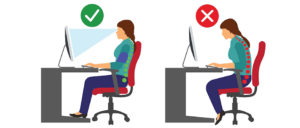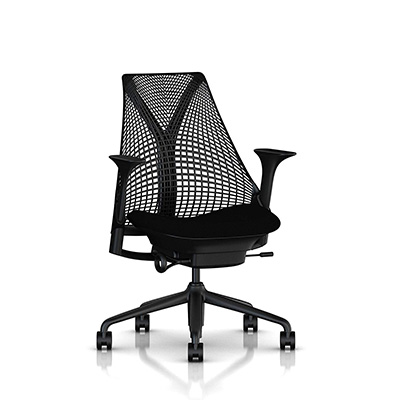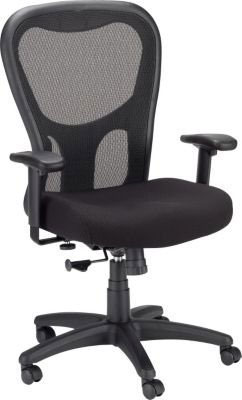11 tips on how to sit at your desk correctly
If you spend a lot of time in front of a computer, you should be aware of some useful tips that will help you diminish muscle strain chances while sitting and also help you maintain a good posture.
1. Support your back – Lower the risk of back pain by adjusting the chair so your lower back is well supported.
A properly adjusted chair will diminish the tension on your back. It is better that you get easily adjustable one, so you can change the back position, height and tilt. Your hips should be slightly higher than your knees. If it feels necessary, utilize a footrest.
2. Adjust your chair – Regulate your chair height so you can use the keyboard with your wrists and forearms straight and level with the floor. This can help avert recurrent strain injuries.
Your elbow joints should form L-shape while sitting.
3. Rest your feet on the floor – Try to put your feet flat on the floor. If they’re not placed that way, use a footrest, which lets you rest your feet at a level that is comfortable.
Remember that crossing your legs may contribute to posture-related problems.
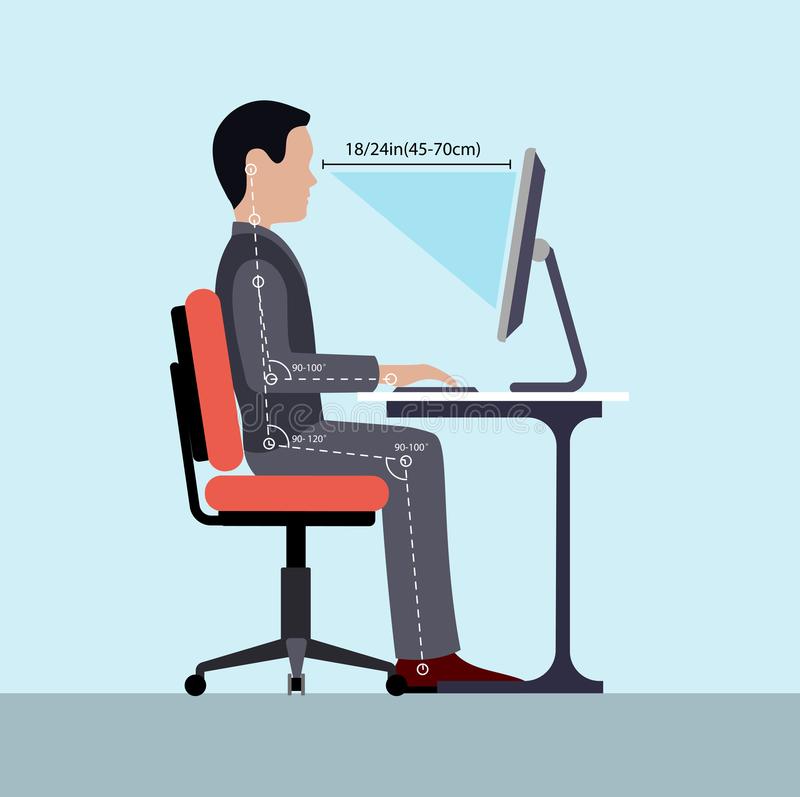
4. Position your screen at eye level – Your screen should be straight in front of you. Put the monitor about an arm’s length away, with the top part of the screen approximately at eye level, for this, you may need a monitor stand. You will have to bend your neck, which can be uncomfortable, If the screen is too high or too low.
5. Have the keyboard straight in front of you – Place your keyboard in front of you when typing. Leave a small space of about 4 to 6 inches, i.e.: 100mm-150mm, at the front of the desk to rest your wrists between bouts of typing. Maintain your arms bent in an L-shape and your elbows by your sides. Some people prefer to utilize a wrist rest to keep their wrists straight and at the same point as the keys.
6. Keep your mouse close – Position and use the mouse as close to you as possible. To help keep your wrist straight and evade awkward bending, a mouse mat with a wrist pad may be a good choice. Try to keep the mouse closer to you.
7. Avoid screen reflection – Your screen should be as glare-free as possible. Hold a mirror in front of the screen If there’s glare on your screen, with this method you will know what’s causing it. Put the monitor in such way to avoid reflection from sunlight and overhead lighting. Pull blinds across the windows, If necessary. Adjusting the screen’s contrast or brightness can make it much easier to use.
Click here to find out which Herman Miller chair is the best.
8. Avoid wearing bifocals – If you have bifocal spectacles, you may find them less than ideal for computer work. It is crucial to be able to see the screen without having to raise or lower your head. If you can’t work easily with bifocals, you may need a different kind of spectacles. Consult your optician if in doubt.
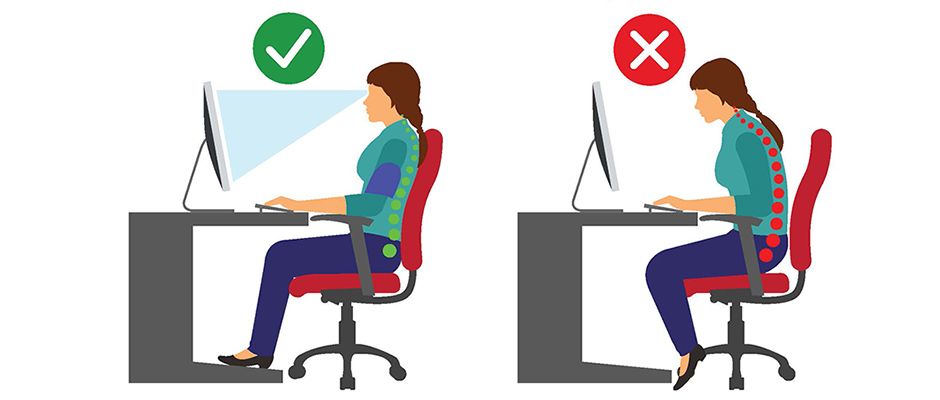
9. Make objects easy to reach – Position frequently used objects, such as your telephone or stapler, within easy reach. Try to evade repeatedly twisting or stretching to reach things.
10. Avoid phone strain – If you usually spend a lot of time on the phone, try swapping from your handset to a headset.
Constantly cradling the phone between your ear and shoulder can stress your neck muscles.
11. Take regular breaks – Try not to sit in the same position for a long time. Make sure you change your posture as often as is possible.
Often short breaks are better for your back than fewer long ones. It gives the muscles a chance to relax while others deal with the pressure.
Find out more about comfortable chairs here.

